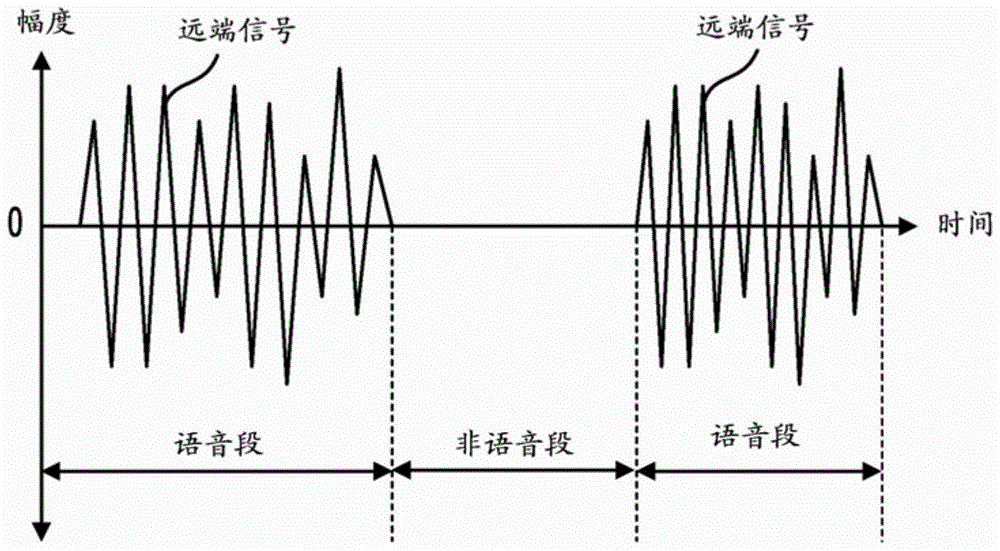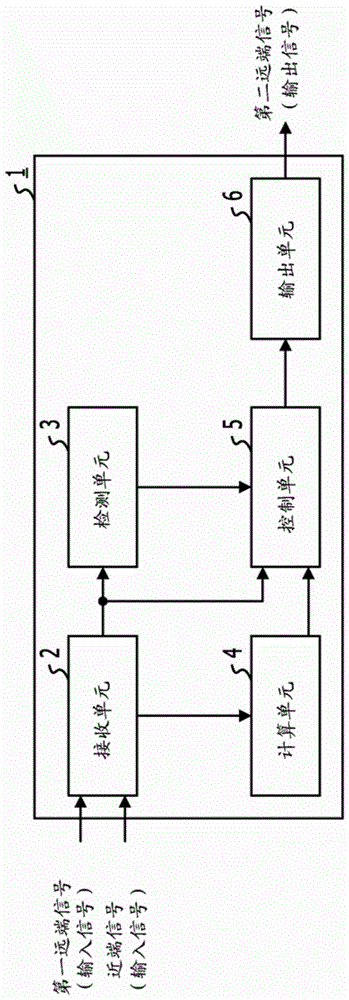Voice processing device and voice processing method
A technology of voice processing and equipment, which is applied in the field of voice processing equipment and voice processing, can solve problems such as slow speaking, and achieve the effect of improving ease
- Summary
- Abstract
- Description
- Claims
- Application Information
AI Technical Summary
Problems solved by technology
Method used
Image
Examples
no. 1 approach
[0028] figure 2 is a functional block diagram showing the speech processing device 1 according to the embodiment. The speech processing device 1 includes a receiving unit 2 , a detecting unit 3 , a computing unit 4 , a control unit 5 and an output unit 6 .
[0029] The receiving unit 2 is realized, for example, by a wired logic hardware circuit. Alternatively, the receiving unit 2 may be a functional module realized by a computer program executed in the speech processing device 1 . The receiving unit 2 externally acquires a near-end signal transmitted from the receiving side (the user of the voice processing device 1) and a first far-end signal including an uttered voice transmitted from the transmitting side (the person communicating with the user of the voice processing device 1). Signal. The receiving unit 2 can receive, for example, a near-end signal from a microphone (not shown) connected to or arranged in the speech processing device 1 . The receiving unit 2 may rec...
no. 2 approach
[0062] exist image 3 Among them, the determination unit 7 can change the control amount (non_sp) by the adjustment amount (r_delta) according to the signal characteristic of the first remote signal. The signal characteristic of the first remote signal may be, for example, a signal-to-noise ratio (SNR) or a noise characteristic value of the first remote signal. For example, the noise feature value may be calculated in a manner similar to the way in which the calculation unit 4 calculates the noise feature value of the near-end signal. For example, the processing unit 9 may calculate the noise characteristic value of the first far-end signal, and the determination unit 7 may receive the calculated noise characteristic value from the processing unit 9 . A signal-to-noise ratio (SNR) may be calculated by the processing unit 9 using the signal-to-noise characteristic value ratio in the speech segment of the first far-end signal, and the determination unit 7 may receive the SNR fr...
no. 3 approach
[0066] exist image 3 Among them, in addition to the control information #1 (ctrl-1), the generation unit 8 may generate control information #2 (ctrl-2) for controlling the speech segment length based on the speech segment length and delay. The processing performed by the generation unit 8 to generate control information #2 (ctrl-2) is described below. For the non-speech segment length, the generation unit 8 generates control information #2 (ctrl-2) such that ctrl-2=0, for example.
[0067] Please note that when ctrl-2=0, no control processing including expansion or reduction is performed on the speech segment of the first far-end signal. For the speech segment length, the generation unit 8 generates control information #2 (ctrl-2) such as ctrl-2=er, where er represents the expansion ratio of the speech segment. Note that the generation unit 8 may generate control information #2 (ctrl-2) such that ctrl-2=0 according to the delay even for the speech segment length. The gener...
PUM
 Login to View More
Login to View More Abstract
Description
Claims
Application Information
 Login to View More
Login to View More - R&D
- Intellectual Property
- Life Sciences
- Materials
- Tech Scout
- Unparalleled Data Quality
- Higher Quality Content
- 60% Fewer Hallucinations
Browse by: Latest US Patents, China's latest patents, Technical Efficacy Thesaurus, Application Domain, Technology Topic, Popular Technical Reports.
© 2025 PatSnap. All rights reserved.Legal|Privacy policy|Modern Slavery Act Transparency Statement|Sitemap|About US| Contact US: help@patsnap.com



